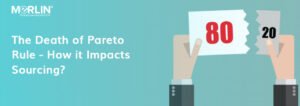Every company needs to source something, whether it be resources for production, services, materials for construction, consumables, or other commodities required. Purchased materials and services make up to 60 to 70 percentage of the product’s total cost in many industries.
Striking a balance between quality, quantity, and price, is a critical aspect while sourcing. The less money you spend on supplies the higher will be your profit margins. However, concentrating on the cost benefits should not affect the quality standards of the product, since your consumers demand quality as well!!
So, how to achieve stability with all these aspects while also maintaining the profit margins? The solution is strategic sourcing. Strategic sourcing strives to increase quality and service while lowering the total cost of materials, products, or services acquired. It focuses on all aspects of the procurement cycle, starting from locating the finest suppliers, understanding demand and specifications, conducting payment negotiations, arriving at optimal buying decisions and sustaining long-term supplier relationships with your major suppliers.
Strategic sourcing can provide several benefits to businesses, the most visible of which is overall cost reductions. Other benefits include risk management, enhanced supplier relationships, enhanced decision-making, increased visibility and control over spend, etc. Organizations trying to manage strategic sourcing with basic spreadsheets often find it overwhelming and the real benefits of strategic sourcing may fade away over time due to difficulty in sustain the best practice processes. That’s where a strategic sourcing solution can help. It enables you to simplify the complexities of strategic sourcing and deliver sustainable savings with its ability to automate critical business processes.

Download the infographic as a PDF by clicking the below button






